After the cancellation of the MWC exhibition scheduled for the end of February, Qualcomm announced the latest 5G modem and radio frequency system: Snapdragon X60 in an online communication meeting today.
This is also the third baseband chip for 5G networks released by Qualcomm after X50 and X55. At the same time, X60 is also defined as the third generation 5G solution by Qualcomm.
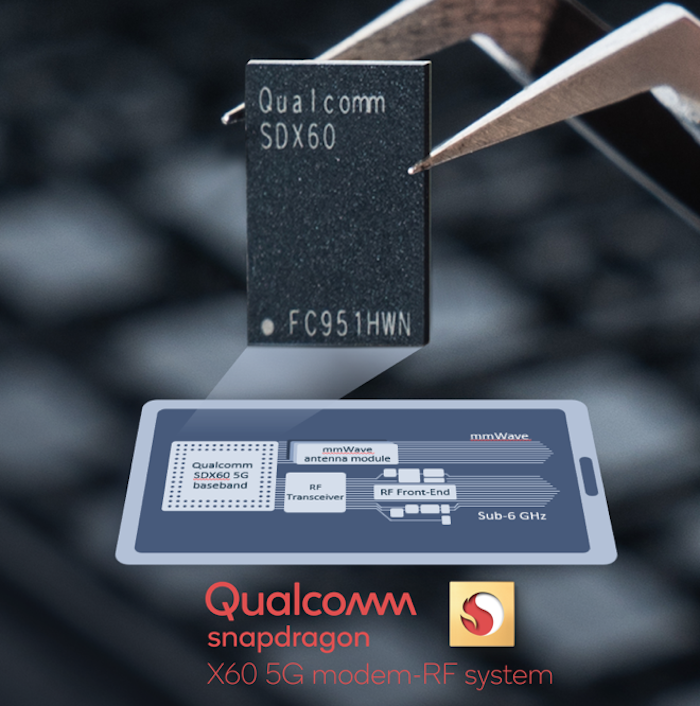
Qualcomm said that the X60 is based on a 5nm process design, including baseband, RF transceiver, RF front-end, and antenna module. It is a system-level complete solution, and its performance and power consumption will be better than 7nm. The craft X55 is even better.
This is also the first time Qualcomm has used 5nm technology in chip design.
In terms of speed, Qualcomm X60 baseband can achieve download speeds up to 7.5Gbps and upload speeds up to 3Gbps. Although it is basically the same as the previous generation X55, the Snapdragon X60 can double the peak throughput for networks deployed only with 5G SA in the frequency band below 6GHz.
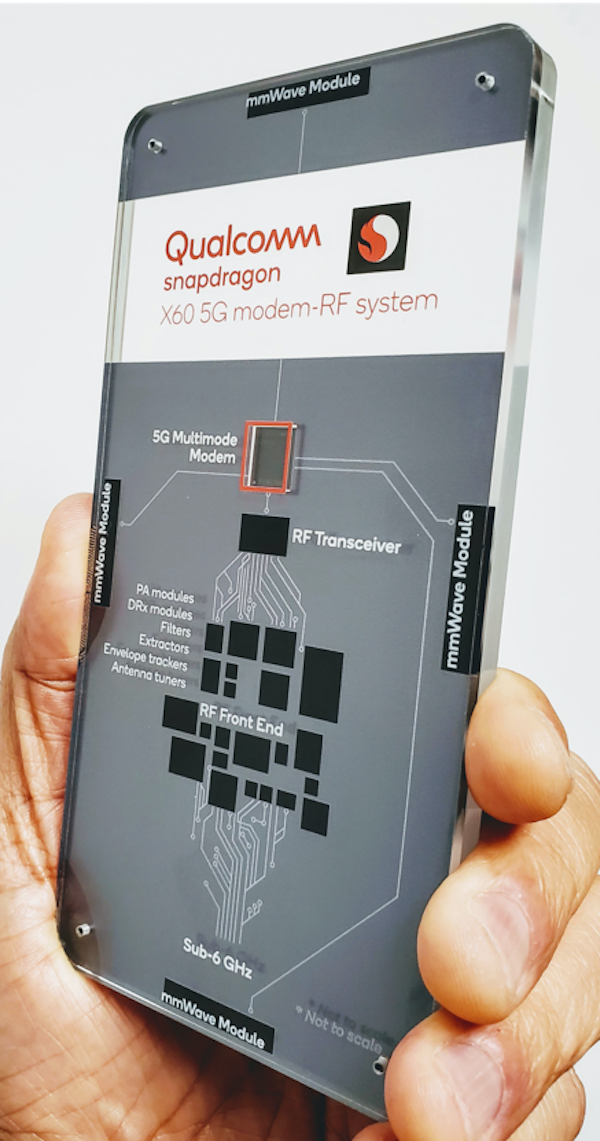
Carrier aggregation is another key improvement of this X60. In terms of significance, 5G networks based on high frequency bands are obviously not able to achieve sufficient coverage. In addition, 2 and 3G networks are gradually shutting down, which will also release some valuable low and medium frequency band resources. In the future, operators will definitely Utilizing these spectrums and reallocating them to 5G involves the use of technologies such as carrier aggregation and dynamic spectrum sharing.
According to Qualcomm’s introduction, X60 baseband is the world’s first 5G radio system to support the world ’s major frequency bands and their aggregation. In addition to supporting 5G FDD-FDD, TDD-TDD carrier aggregation and dynamic spectrum sharing, it also supports frequency bands below 6GHz 5G FDD-TDD carrier aggregation.
This will also allow operators to make greater use of existing spectrum resources and improve network capacity and 5G coverage.
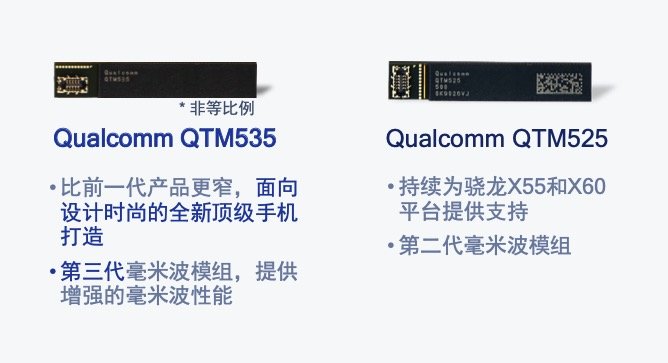
With the release of the X60 baseband, Qualcomm also brought a brand new QTM535 millimeter wave antenna module. Compared with the current QTM525 antenna, the 535 provides more powerful millimeter wave performance and is more compact. Not only can save space, but also further reduce the thickness of 5G mobile phones.
The last point is XNR baseband support for VoNR technology. This is a 5GThe voice technology solution under the network is the same as the VoLTE technology that we will use under 4G. VoNR allows us to maintain a 5G network while using voice calls without dropping to 4G, so as to ensure that network services and voice services are the same. Operation under the network.
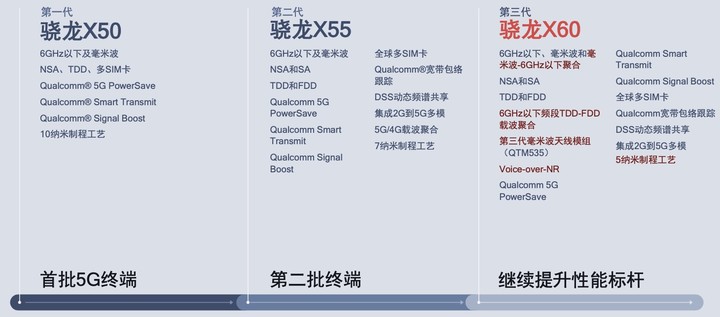
At present, the commercial time of Qualcomm X60 baseband has not been determined. According to Shen Lei, senior director of Qualcomm product marketing at the communication meeting, Qualcomm has no plans to use Snapdragon X60 with Snapdragon 865. This also means that most of the 5G flagships we can buy this year will still use the combination of “Snapdragon 865 chip + X55 baseband”. As for the X60 baseband, it is more like for the next generation of Snapdragon chips, such as Snapdragon 875.
According to the plan, the first samples of X60 will be submitted to OEMs in the first quarter of 2020. As consumers can really see the mobile phones using this baseband, they should wait until early 2021.
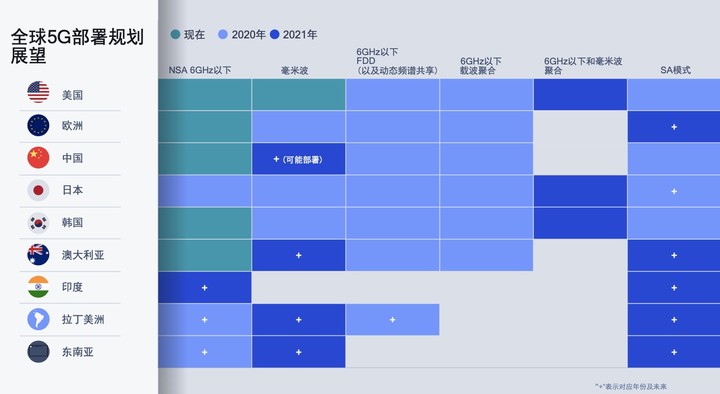
By 2021, the global 5G market will gradually shift from non-independent networking (NSA) deployment to independent networking (SA) deployment. Some 5G standards that are only commercially available in a certain area, such as millimeter waves, are also likely to It will gain wider popularity next year.
By then, 5G mobile phone support for the full band will definitely become a new target for manufacturers and users. In a more comprehensive frequency band environment, manufacturers no longer need to restrict some chip functions because some frequency bands are not yet open.
So you can also see that many key functions supported by the Snapdragon X60 this time, such as millimeter-wave aggregation below -6GHz, FDD-TDD aggregation below 6GHz, dynamic spectrum sharing, and the newly launched QTM535 antenna, etc. It is to further strengthen the application of SA network deployment and support for millimeter wave.
To a certain extent, this new baseband is also designed to help operators and mobile phone manufacturers accelerate the transition from 5G NSA to 5G SA mode. After all, the non-independent network deployment of NSA that has just landed at this stage is only a product of the early 5G transition, and SA deployment that can provide a complete 5G experience will be the mainstream of the future.